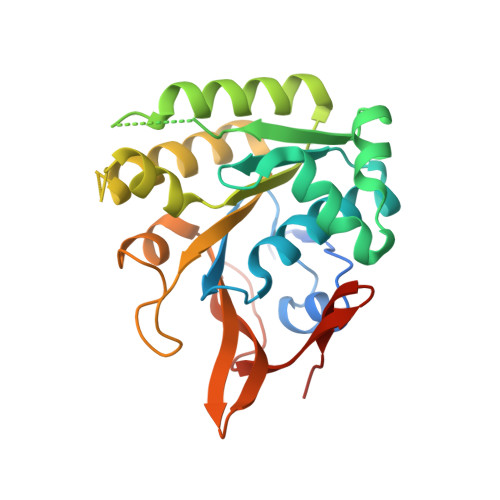Conformational rearrangements of the C1 ring in KaiC measure the timing of assembly with KaiB.
Mukaiyama, A., Furuike, Y., Abe, J., Yamashita, E., Kondo, T., Akiyama, S.(2018) Sci Rep 8: 8803-8803
- PubMed: 29892030
- DOI: https://doi.org/10.1038/s41598-018-27131-8
- Primary Citation of Related Structures:
5YZ8 - PubMed Abstract:
KaiC, the core oscillator of the cyanobacterial circadian clock, is composed of an N-terminal C1 domain and a C-terminal C2 domain, and assembles into a double-ring hexamer upon ATP binding. Cyclic phosphorylation and dephosphorylation at Ser431 and Thr432 in the C2 domain proceed with a period of approximately 24 h in the presence of other clock proteins, KaiA and KaiB, but recent studies have revealed a crucial role for the C1 ring in determining the cycle period. In this study, we mapped dynamic structural changes of the C1 ring in solution using a combination of site-directed tryptophan mutagenesis and fluorescence spectroscopy. We found that the C1 ring undergoes a structural transition, coupled with ATPase activity and the phosphorylation state, while maintaining its hexameric ring structure. This transition triggered by ATP hydrolysis in the C1 ring in specific phosphorylation states is a necessary event for recruitment of KaiB, limiting the overall rate of slow complex formation. Our results provide structural and kinetic insights into the C1-ring rearrangements governing the slow dynamics of the cyanobacterial circadian clock.
Organizational Affiliation:
Research Center of Integrative Molecular Systems (CIMoS), Institute for Molecular Science, National Institute for Natural Sciences, 38 Nishigo-Naka, Myodaiji, Okazaki, 444-8585, Japan. [email protected].

















